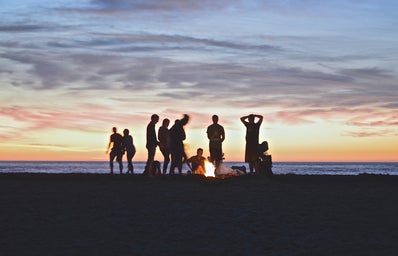Summer in Kyoto: Photo Diary
by Amy Zhao, 2019
Oh so much to do, so much to see. But where will your next destination be?
I sincerely suggest land of robots, anime, and ninjas — Japan. Japan is a country that appeals to mostly everybody, whether you love the latest cutting-edge technology, cartoon characters with big eyes, or stealthy killer spies whose modern representations may or may not be historically accurate (I mean ninjas). This past summer, I spent two months in Kyoto, Japan, a city whose name happens to be an anagram of Tokyo. While Tokyo might be the capital nowadays, boasting a glowing metropolis and busy nightlife, Kyoto is the old capital. It’s full of the annals of time and history, preserved almost perfectly because of Kyoto’s location off of any fault line or epicenter — a set up that makes it an excellent place for the preservation of historical monuments.
But enough of me droning on about Kyoto. A picture is worth a thousand words, and because I get paid here by the word (just kidding), here are some pictures of the beautiful, beautiful Kyoto, and the beautiful, wonderful Japan.
Kyoto:
Kyoto is the place to go if you love history, religion, or just beautiful places. I thought that two months in Kyoto would be far too long, but unfortunately, I was drastically mistaken. At the end of my trip, I realized that I had failed to make it to some key destinations, and was pretty heartbroken. But, as the Douglas MacArthur and The Terminator said, “I’ll be back.”
Kinkakuji and Ginkakuji (aka Golden and Silver Pavillion)
The picturesque Kinkakuji, whose beauty is only augmented by the reflection in the deep pool. Kinkakuji is actually a Buddhist Zen Temple, built by one of the Ashikaga Shoguns. The outside of it is covered in gold leaf, which gives it a delicate luster that changes with the light.
Ginkakuji, or Silver Pavilion, is actually not covered in silver, but it was built by the aforementioned Shogun’s grandson, as a way to pay homage to his grandfather. It too is a functioning temple, and though not quite as breathtaking as Kinkakuji, it certainly possesses a tranquility and openness that renders one very nearly philosophical. In fact, it is located right next to the Philosopher’s Path, a picturesque trail one can take for a walk, and make stops at each and every temple/shrine on the way. But note: temples and shrines in Japan tend to close at 4 or 5 pm, so be sure to keep an eye on your watch.
Uji and Kiyomizudera
Uji is a city inside of Kyoto, and it’s famous for a couple of things. First, for being the location of The Tale of Genji, considered to be the first novel ever written (and by a female author, no less), and second, for the Byodoin, a temple built by the powerful Fujiwara clan (yes, rich and powerful people build temples). The Byodoin is featured on the back of the ten-yen Japanese coin. Uji is also famous for its matcha, which is a fine powdered green tea. The city sells matcha ice cream, matcha soba, just matcha . . . etc. This would make a fine souvenir to bring back!
Statue of Murasaki Shibuku, author of The Tale of Genji.
The Byodoin, which literally means the Temple of Equality. The most famous place inside is the Hodo, or the Phoenix Chamber, which houses a large statue of Amida Buddha. You can go on a tour inside the Hodo, but be warned: it’s in Japanese!
Kiyomizudera (The Temple of Clear Water) is quite close to the Byodoin, and is famous for the two love rocks. (You will find in Japan that there’s always a special something for every little thing. There’s even a shrine dedicated to the God of Hair in Arashiyama, but I digress.) Without revealing too much, I’ll try to explain the temple. There are two rocks, directly across from each other and maybe twenty or thirty feet apart. Supposedly, if you close your eyes and walk from one rock to the other on your own, you will find love within the coming year. If you do so with the aid of somebody else, you will find love in the coming year, but will need someone to guide you and help you. If you are unable to make it to the other rock with your eyes closed, or pass it by (like me), love won’t be coming in the next year.
There’s my friend, successfully touching the rock on the other side, happily receiving the promise of love in the coming year. I am out of the page, weeping over the fact that love will not come to me, as I walked right past the rock without hesitation.
Fushimi Inari: Fushimi Inari is the head shrine of Inari, and is located all up a mountain, so if you’re up for some exercise, it’s a great place to go! Foxes are considered special here, so statues and representations of them stand all around; however, unlike the deer in Nara, they don’t seem to be roaming freely around, harassing tourists for food.
Fushimi Inari
These little wooden tablets are called emas, and people write down their wishes and prayers, and hang them for good luck. The Fushimi Inari emas feature (you guessed it!) foxes, and they allow the wishmaker to customize their little fox before hanging it up.
The view from halfway up. Breathtaking, no?
Nara: Nara was once house to the Imperial Family, until the capital bounced around and finally landed in Kyoto, where it stayed for a very, very, very long time. Regardless, it is a beautiful city, flanked by mountains and full of deer. The deer are considered sacred here and they roam around the city freely. You can buy a packet of tasty senbei (crackers) and feed them — but do be careful, because as innocent and docile as they might seem, the moment they see senbei in your hands, they become vicious, gluttonous creatures that will stop at nothing to obtain the tasty treats that you’re holding.
Do not be fooled by this picture: this lovely girl is the secretly the Queen of Deer. All other lowly mortals who had senbei were mauled. (I may or may not speak from personal experience.)
Yes, Dear (Deer)?
The outside of the reconstructed Nara Palace.
This is the coveted Iron Throne, seat to the Emperor, who would always address his subjects facing southwards. Unfortunately, it’s not actually called the Iron Throne, isn’t located in Westeros, and doesn’t seem to make the same statement, but nonetheless, it’s still a great place to visit.
Todaiji (the Eastern Great Temple), as shown above, is a massive temple dedicated to the Cosmic Buddha Mahavairocana. You might be thinking, “hmmm, it looks so majestic, perhaps even more so than the royal palace.” It would be hard to say that you are mistaken. It was funded by the imperial family, and the cost of such an extravagant undertaking nearly sent them into bankruptcy. Inside, it houses one of the biggest Buddha statues, and more importantly, a test of whether or not you will achieve enlightenment in your next life.
Somewhere in the back of the temple, there is a large pillar with a hole cut through it–this hole is said to be the exact size and shape one of the nostrils on the Buddha statue. Legend has it that those who can fit through the hole are guaranteed enlightenment in their next life. I fit through the hole, so I am all set. But are you ready to try it?
There are so many more places to be seen–Osaka, Nagoya, Hiroshima, Tokyo…all these cities provide a different sort of culture and pace to your everyday activities. So go . . . go to Japan! Plan your vacation for next summer, or wait until the 2020 Olympics. Either way, you are bound to have lots of fun, and a wonderful experience.

